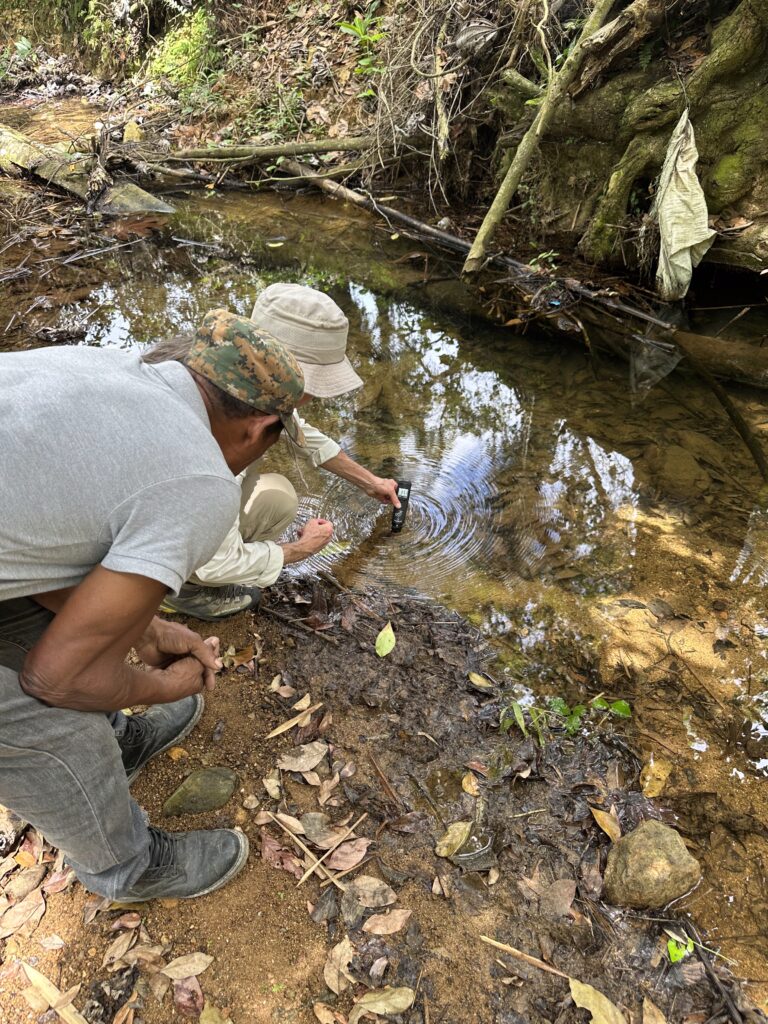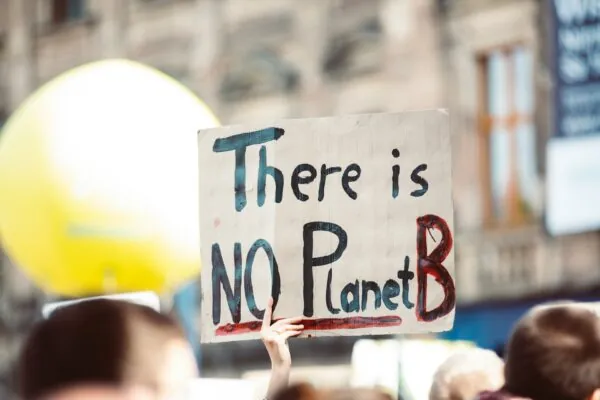|
Getting your Trinity Audio player ready...
|
Guest blog by María Alejandra Torres García
In March 2025, at the request of the Comité Nuevo Renacer, an aqueous geochemist from Buka Environmental and I traveled to the Dominican Republic for water quality testing in different water sources of concern around the Pueblo Viejo mine. Earthworks first visited the Comité in November 2022 to learn how they advocate for communities near Barrick Gold’s Pueblo Viejo mine and its mine waste facilities, known as tailings facilities.
The Comité represents six communities surrounded by Barrick Gold’s Pueblo Viejo Mine and the El Llagal tailings facility. Waste from gold mining commonly contains heavy metals and other toxic substances that can affect health. Acid mine drainage is a known environmental risk at the Pueblo Viejo Mine, according to the company’s technical report. Indeed, Pueblo Viejo’s 2023 Technical Report states: “Test results indicate that most of the exposed rock at the mine site is acidic and contains significant sulphide levels providing a source for additional acidity.”
Community members suspect that the tailings facility may have contaminated the surrounding natural water sources based on experiences such as health problems after using the water and livestock deaths. As a result, community members expressed that they no longer use the rivers and streams they once used for bathing, drinking, and cooking. Community members are also unsure if the wells that the government and Barrick have constructed provide clean and healthy water. To test their theory, the Comité—representing these six communities—provided information to develop a water sampling and analysis plan.
First, the Comité identified several water sources to test in the six communities of La Piñita, La Cerca, Las Lagunas, Jurungo, and Jobo Claro, all of which are outside of property owned by Barrick Gold but still nearby. Second, Buka Environmental sought the best accredited lab in the Dominican Republic to help collect and analyze the samples. Third, we worked with the lab to identify the locations and select testing parameters like cyanide, ammonia, total metals, dissolved metals, and E. coli. Finally, our team traveled to the Dominican Republic to support the lab’s technicians and conduct field measurements, and I was on hand to document the process.
The field sampling effort took three days to complete. On the first day, two Comité members guided us to natural water sources—away from their communities—that they believe are not influenced by the mine or the tailings facility. Importantly, identifying “baseline” or background locations can serve as a point of comparison to impacted locations.
The second and third days followed the same pattern, but water samples were collected for analysis in the laboratory. Two Comité members guided us to different water sources identified in the sampling plan as potentially impacted by the El Llagal tailings facility and the mine. The lab technicians collected the samples at these locations following their protocols and those of the sampling and analysis plan created by Buka Environmental and the Comité. The lab is certified to analyze water samples for metals and other mine-related contaminants, and its protocols are internationally recognized. Thus, the technicians labeled the bottles, noted time stamps, added the appropriate preservatives, and placed the bottles in coolers to be transported to the lab at the end of each day. The technicians created chains of custody for both days, documenting the process.
At each location, Buka Environmental likewise measured the water for pH (a measure of its acidity), water temperature, conductivity (the ability of the water to conduct an electrical charge, which is related to the “saltiness” of the water), and TDS (related to conductivity and a measure of the total amount of dissolved substances in the water). Buka Environmental tasked me with recording the lab’s sample collection and the measurements in the field sampling and analysis plan book. Our two Comité member guides learned to measure pH, temperature, conductivity, and TDS, and how these can indicate water quality.
After the lab sends the results to Buka Environmental, they will review and interpret the results. The results will be compared to relevant water quality standards in the Dominican Republic and other countries. Then, the Comité will decide what to do with the findings.

Our community-led water testing comes a week after an investigative report by Pamela Rojas for De Último Minuto TV. In “El Agua es el Recurso Natural que Más se ve Afectado por la Presa de Colas en El Llagal” (“Water is the Natural Resource Most Affected by the El Llagal Tailings Dam,”) Rojas spoke with residents of Zambrana who also live next to the tailings dam; the Director of the Franja Lab, Frank Reyes; as well as Barrick employees and government officials.
The Franja Lab analyzed samples collected from natural water sources surrounding the El Llagal tailings dam. Reyes stated that the water samples the lab tested were acidic and had high lead concentrations.
Earthworks hopes to obtain more information about where the Franja Lab collected its samples and the methods it used to analyze them. We are also waiting for the interpretation of the results of the samples that the Comité identified. The Comité hopes its process with Buka Environmental and Earthworks answers their questions about water quality and mining operations that have largely gone unanswered so far.
As Barrick plans to construct a second tailings facility, El Naranjo, close to the El Llagal facility. The Comité fears a second tailings dam will only exacerbate their experiences of environmental degradation and displacement. For several months, communities near those represented by the Comité have protested Barrick’s alleged expansion and displacement of families. The company and communities have not agreed on a fair relocation and compensation plan for the people living nearby.
Since January 2025, the Comité has supported these communities’ peaceful protests, which have reportedly been met with militarized violence. Priest Johnny Durán––with a bloodied face––argued that Barrick sent the National Guard and police officers to “besiege” unarmed protesters with rocks and tear gas. Beginning in March 2025, community members have set up protest camps where Barrick cut down trees at the headwaters of Río El Naranjo, to prevent further felling in the area, where the community gets water. In Rojas’ report, Barrick claims it tore down trees within its private land. Yet, as of April 2025 Listin Diario article notes that “[t]he area where the El Naranjo river originates… remained militarized.” Community members stopped Barrick Gold from felling hundreds of trees to build a tailings dam there.
The Comité has supported these communities’ “response to Barrick Pueblo Viejo’s expansion of the tailings dam, which threatens to affect a vital ecosystem for the region.” As the Comité has emphasized to us, they know what it is like to live near a risky tailings dam and not have their relocation demands met.
Read Barrick’s response to this blog here and a reply to that response here.

